He's Fixin' to Be a Man
Young Vermilion Flycatchers are always a treat to see
Tucson seems to be a hotspot for finding and viewing Vermilion Flycatchers. The males, in their brilliant red colors, are conspicuous thanks to their habit of hunting in the open in virtually every field and park throughout town. In addition, Vermilion Flycatchers can be found out of town in riparian habitat and in open fields. The immature male Vermilion is just as striking as the full adult is as seen in this striking example below.
I’ve been spending time at El Rio Preserve lately as the water is being drawn down. Vermilion Flycatchers seem to like a small island that offers many great perching spots for their hunting flights. The immature male in these photos can be seen frequently at this spot. I like how his red feathers are beginning to come in- they seem to match the autumn leaves in the background.
Here is an adult male Vermilion Flycatcher. It takes male Vermilions two years to achieve this full adult plumage. In the desert, you can spot this bright red from quite a distance. It is a spectacular color and a bird that people never get tired of seeing. Birdnote suggests that these adults may be “the reddest bird in America.” Listen and find out why!
Looking closely, you can see red feathers beginning to come in on the head of this bird. It isn’t until the second summer that the young males begin to grow out all of their red feathers. This bird likely hatched last summer and now, as a close friend says, “is fixin’ to be a man!” By next summer he will be as red as his father is.
This species is a flycatcher. Flycatchers were named for their hunting style of foraging mid-air for flying insects. They will also catch insects on the ground. After each hunting chase, they will return to the same or to a nearby perch to begin searching for their next snack. In the shot below, you can see the Vermilion focusing on something ‘edible’ below it.
...and he’s off. Southwest Audubon shares more about this special species.
After catching another insect, the Vermilion returned to another perch on the island. This bird is so special that the Tucson Bird Alliance has chosen it to be its “fire-headed” mascot. You can read why here.
A few photos back was a shot of the Vermilion Flycatcher diving down on prey. It may have been flying towards a fish and not an insect. This behavior at El Rio was studied and captured beautifully a year ago by Tucson Photographer Jeffrey Scott. Jeffrey, an excellent photographer, observed and photographed Vermilion Flycatchers actually hunting for and capturing small fish at the surface of the water. This behavior and prey choice had never been documented before. Jeffrey’s photographs created a nation-wide buzz that was celebrated with a nice story in the national Audubon magazine. I think you will enjoy reading all about this.


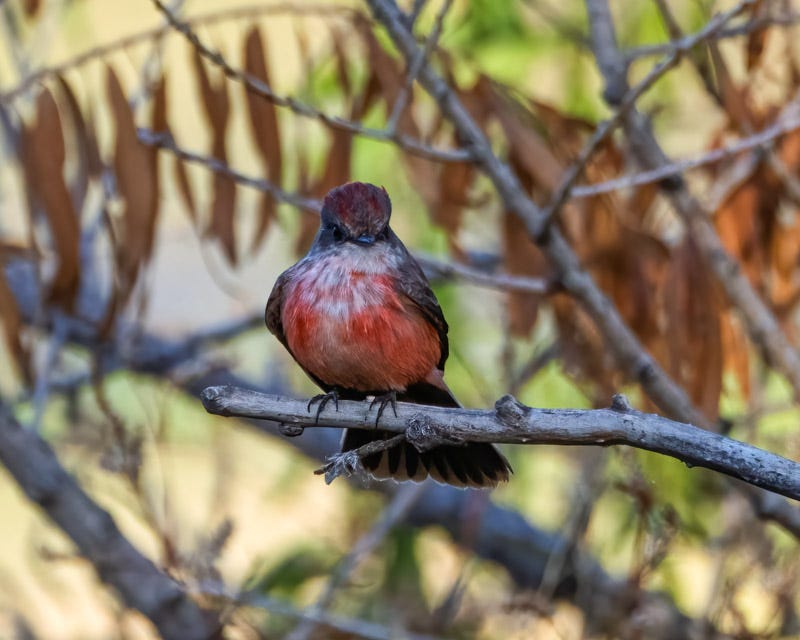

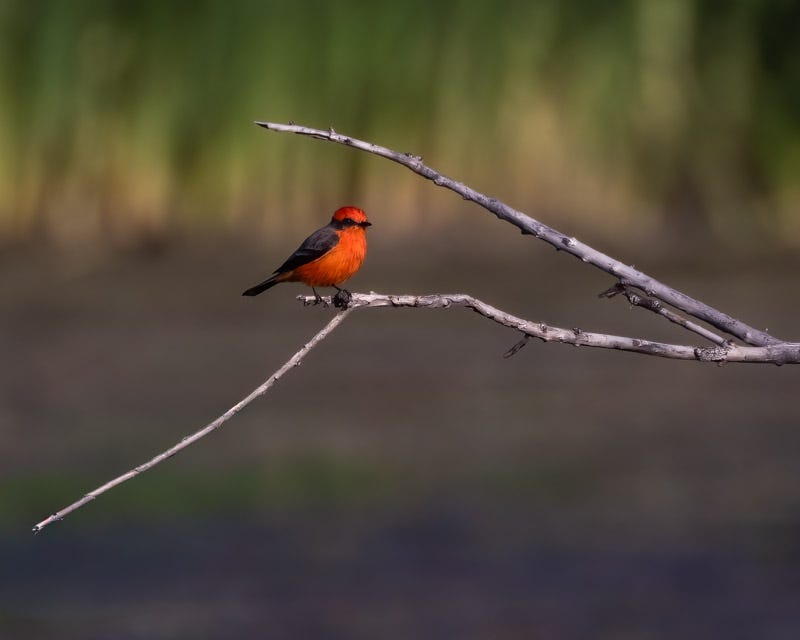
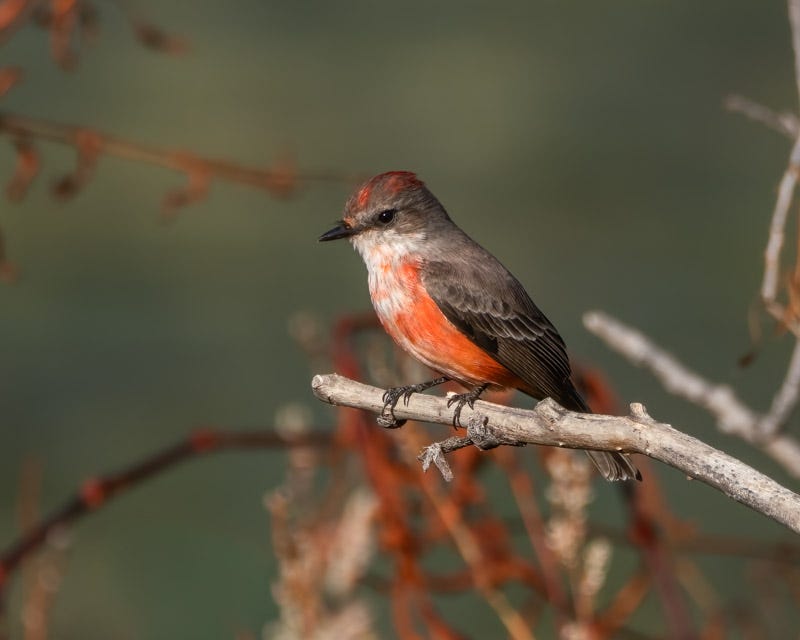
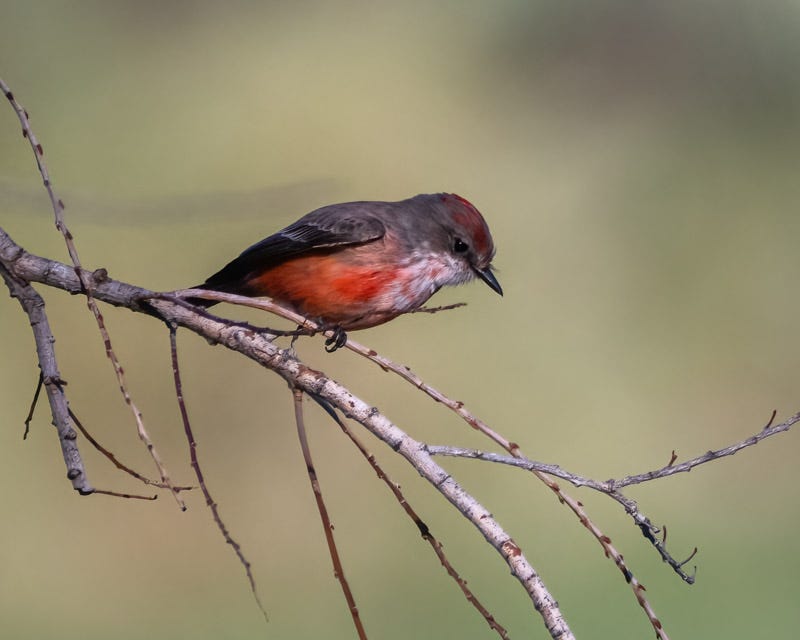
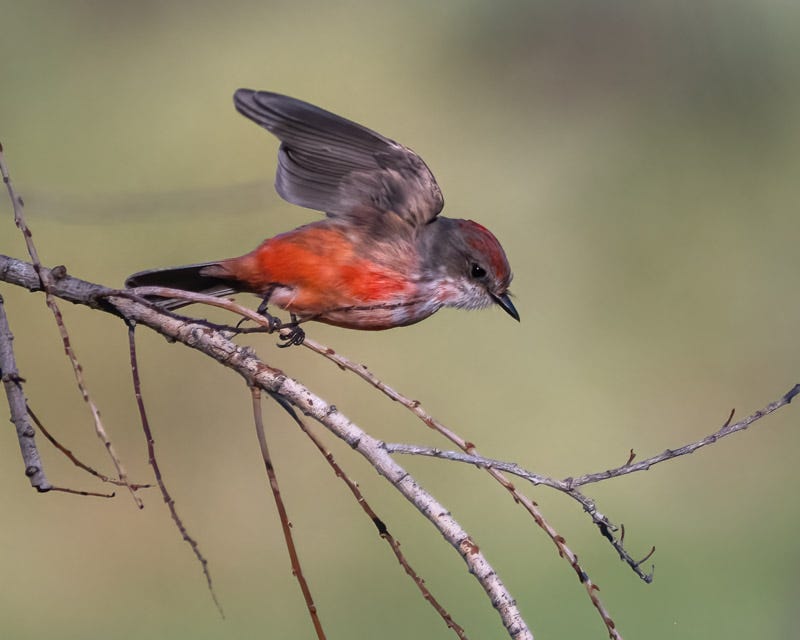
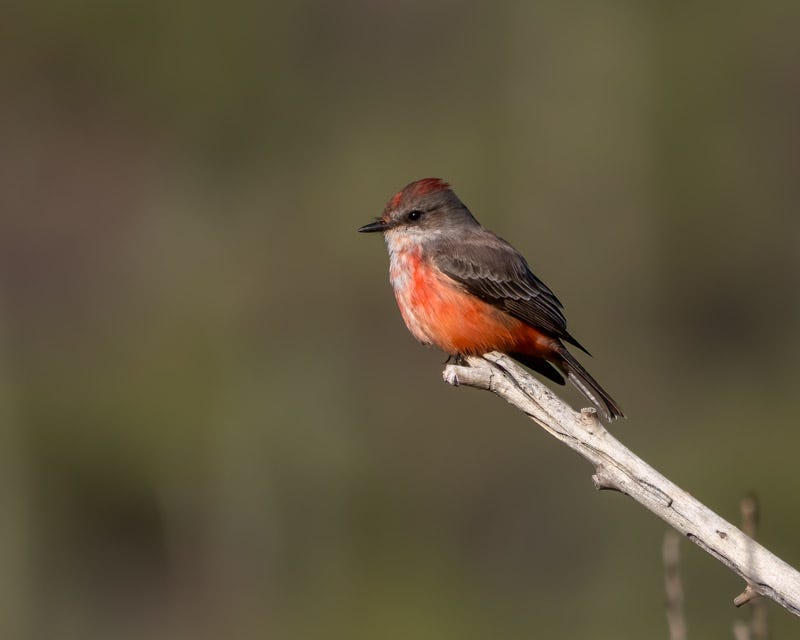
Beautiful pictures!
Fascinating, as always. Thank you.